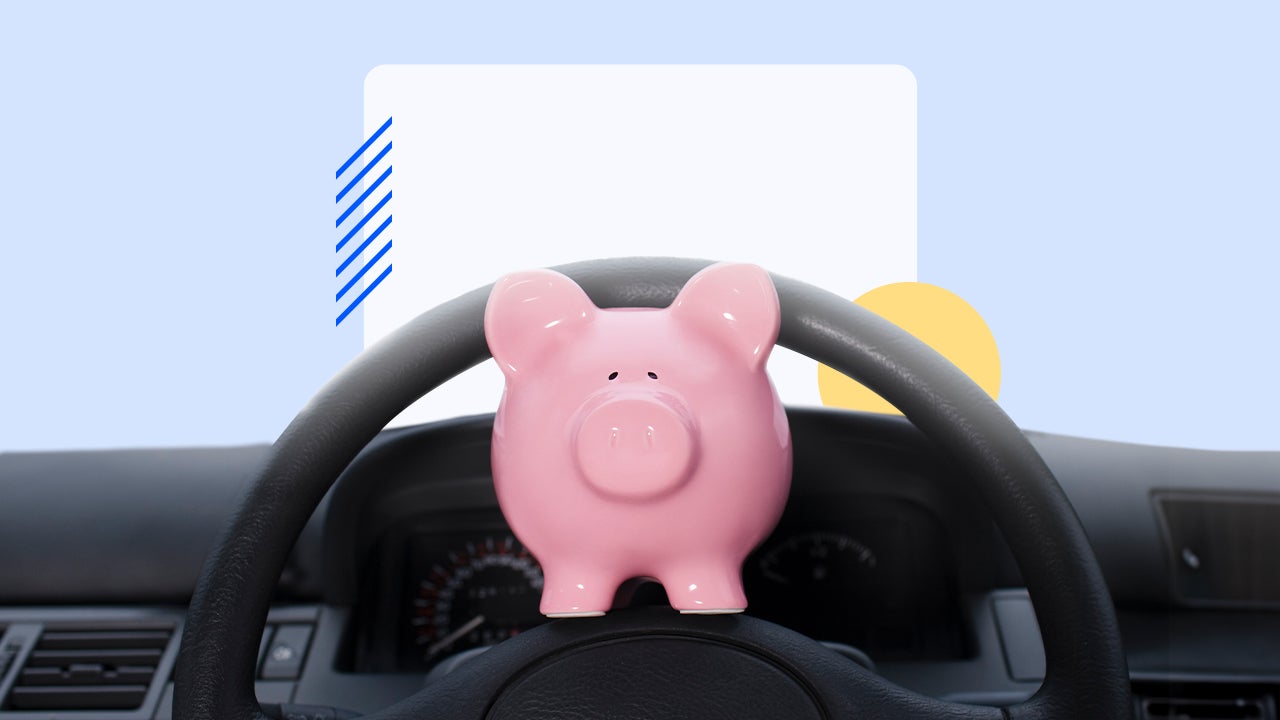6 tips to set (and hit) your savings goals

Key takeaways
- Specific savings goals work better than vague intentions to “save more money” — define exactly what you’re saving for.
- Setting deadlines and breaking large goals into smaller monthly targets makes them more achievable.
- Creating separate accounts for each goal helps you track progress and avoid spending savings on other things.
- Automating your savings removes the temptation to skip contributions and ensures consistent progress toward your goals.
Setting savings goals is one of the most effective ways to build wealth and achieve financial security. Without clear targets, it’s easy to spend everything you earn and wonder why your savings never grow.
The difference between people who successfully save money and those who struggle often comes down to having specific, well-planned goals rather than vague hopes to “save more.” When you know exactly what you’re saving for and have a realistic plan to get there, saving becomes much easier and more rewarding.
Here’s how to set savings goals that actually work and the strategies that will help you achieve them consistently.
1. Choose specific, meaningful savings goals
The first step to successful saving is defining exactly what you’re working toward. Instead of saying “I want to save more money,” identify specific goals like “I want to save $15,000 for a house down payment” or “I want to build a $10,000 emergency fund.”
Start with an emergency fund if you don’t have one already (here’s our guide to building one). Aim for three to six months of expenses saved in a readily accessible account. This might seem like a large amount, but remember that this calculation is based on your necessary expenses, not your total income.
Have the emotional conversation with yourself about your money and what you hope it accomplishes.— Amy Irvine, CFP, owner of Rooted Planning Group
If your ultimate emergency fund goal feels overwhelming, break it into smaller milestones. If you need $15,000 total, make your first goal $1,000, then $2,500, then $5,000. These smaller targets feel more achievable and give you regular wins to celebrate.
Other common savings goals include a vacation, new car, home improvements or major appliances. The key is choosing goals that genuinely matter to you rather than what you think you “should” save for.
2. Set realistic deadlines for your goals
Once you know what you’re saving for, decide when you want to achieve it. Setting a timeline creates urgency and helps you calculate how much you need to save each month.
“Setting yourself up for success means a plan and a schedule,” says Ari Baum, CFP, founder and CEO of Endurance Wealth Partners. “Figure out your monthly or weekly contributions to reach your goals.”
For shorter-term goals like a vacation next year, your timeline might be fixed by external factors. For longer-term goals like retirement, you have more flexibility in setting your target date.
Use your timeline to calculate monthly savings targets. If you want to save $6,000 for a vacation in 12 months, you’ll need to save $500 per month. If that feels like too much, you can either extend your timeline or adjust your goal amount.
Savings Calculator Tool
Use Bankrate’s savings goal calculator to determine exactly how much you need to save each month to reach your goals on time.
3. Create separate accounts for different goals
Keeping all your savings in one account makes it hard to track progress toward specific goals and easy to accidentally spend money intended for one purpose on something else. Setting up different savings accounts for each major goal solves this problem. You can see exactly how much progress you’ve made toward each objective, and you won’t be tempted to “borrow” from your vacation fund to cover other expenses.
Many banks offer savings accounts that let you create separate “buckets” or sub-accounts within one main account. This feature gives you the organizational benefits of multiple accounts without the hassle of managing several different account numbers.
When prioritizing multiple goals, focus on necessities first. Building an emergency fund typically takes priority over vacation savings. If you need a reliable car for work, that might come before other wants.
Remember that FDIC insurance covers up to $250,000 per depositor, per bank, per ownership category. If you’re saving substantial amounts, consider spreading your money across multiple banks to ensure full coverage.
4. Track your progress consistently
Monitoring your progress keeps you motivated and helps you identify problems before they derail your goals. Check your account balances at the end of each month to confirm you’ve saved the amount you planned.
If you’re falling short, look at your budget to see where the money went. Maybe your grocery spending was higher than expected, or you had an unusual expense that month. Understanding what happened helps you adjust for the next month.
A simple spreadsheet can work well for tracking multiple goals. Create columns for each goal, your target monthly savings, actual monthly savings, and total progress. Seeing your balances grow over time provides motivation to keep going.
Many budgeting apps can automate this tracking for you. They connect to your accounts and show your progress toward each goal without manual data entry. Check out Bankrate’s picks for best money-saving apps.
Bankrate tip: Making tracking easier
Set up account alerts that notify you when you make deposits or when your balance reaches certain milestones. These small celebrations along the way help maintain momentum toward your larger goals.
5. Break large goals into manageable pieces
Big savings goals can feel overwhelming, which makes it tempting to give up before you start. Breaking them into smaller, more manageable chunks makes them feel achievable.
If you want to save $5,000 for a vacation in 12 months, thinking about it as $416 per month might feel daunting. But $104 per week or about $15 per day might feel more manageable.
You can also create milestone celebrations along the way. When you reach 25 percent of your goal, treat yourself to something small (within your budget). These intermediate rewards help maintain motivation during longer savings periods.
Consider adjusting your approach if weekly targets still feel too high. Look for specific ways to reduce spending rather than just hoping you’ll spend less. Maybe you pack lunch twice a week instead of buying it, or you choose a streaming service instead of cable.
6. Automate your savings to remove temptation
Automating your savings is one of the most effective ways to ensure you actually reach your goals. When money moves to savings automatically, you never have the chance to spend it on something else.
Set up automatic transfers from your checking account to your savings accounts to occur right after payday. This “pay yourself first” approach treats savings like any other essential bill that must be paid.
Brian Walsh, Jr., co-founder of Walsh & Nicholson Financial Group, says that automatically moving the money helps it stay out of sight so you don’t spend it. He also recommends using an investment account when it makes sense for your situation. “Set up an investment account, whether it be a Roth IRA, IRA or brokerage account, and have a set dollar amount going into that account each paycheck,” he says. “You can set up your bank account to automatically transfer to the investment account.”
You can automate different amounts for different goals. Maybe $200 goes to your emergency fund, $300 to your house fund, and $100 to your vacation savings each month. Adjust these amounts based on your priorities and timeline for each goal.
Savings goal statistics
- Americans’ top financial goals for 2025 included paying down debt (21 percent), saving more for emergencies (12 percent) and getting a higher-paying job or an additional source of income (11 percent) according to Bankrate’s Financial Outlook Survey.
- Less than half of people (41 percent) say they would be able to pay for an unexpected $1,000 expense from their savings per Bankrate’s 2025 Emergency Savings Report.
- Less than one-third of U.S. adults — 27 percent — have no emergency savings at all, as of May 2024 polling, according to Bankrate’s Emergency Savings Report.
Why are savings goals important?
Saving money is one of the most important steps toward financial freedom. Whether you’re building an emergency fund or saving for a major purchase, having money set aside means you can handle unexpected expenses and opportunities without going into debt.
Savings goals provide direction for your spending decisions. When you know you’re working toward something specific, it’s easier to skip unnecessary purchases and focus on what really matters to you. Plus, working toward clear goals can give you a sense of progress and control over your financial future.
What should I do if I fall behind on my savings goal?
Life happens, and sometimes you’ll miss your savings targets. Don’t let temporary setbacks derail your entire plan.
Treat savings goals like a marathon, not a sprint. If an unexpected expense forces you to skip a month or two of savings, adjust your timeline rather than abandoning your goal completely.
Sometimes falling behind is a sign that your original goals were too aggressive. Be honest about what you can realistically achieve given your income and necessary expenses. It’s better to have modest goals you actually reach than ambitious ones that constantly frustrate you.
Bottom line
Setting up savings goals is a way to help ensure you’ll have the money for emergencies, as well as things you need and want. After defining what you’re saving for and working out a realistic timeline, it’s important to track your progress every month. This can be part of a regular budgeting process, whether you’re using pen and paper, a spreadsheet or a handy budgeting app.
Ultimately, having defined savings goals can help you save money more quickly and afford the things you want while staying financially healthy and keeping out of debt.
Ready to start working toward your goals? Explore high-yield savings accounts to maximize your progress, or consider money market accounts that offer competitive rates with some additional features.
Why we ask for feedback Your feedback helps us improve our content and services. It takes less than a minute to complete.
Your responses are anonymous and will only be used for improving our website.
You may also like

Cash stuffing: How this trendy budgeting method works

5 ways to avoid impulse buying





